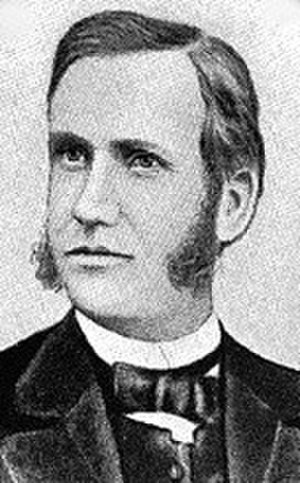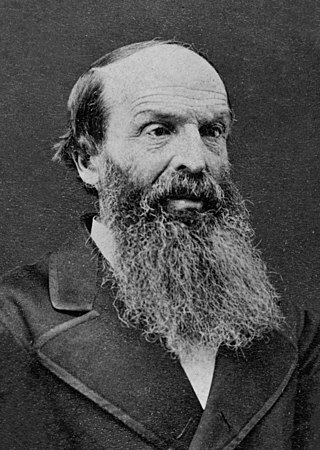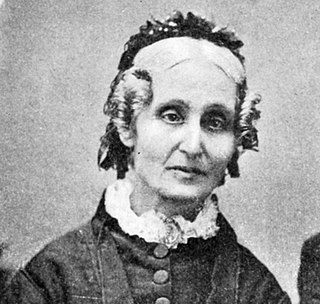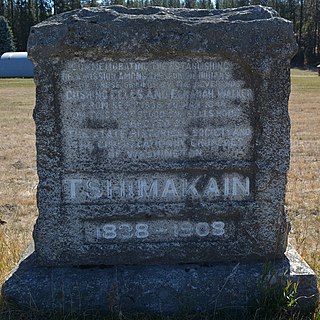
The Cayuse are a Native American tribe in what is now the state of Oregon in the United States. The Cayuse tribe shares a reservation and government in northeastern Oregon with the Umatilla and the Walla Walla tribes as part of the Confederated Tribes of the Umatilla Indian Reservation. The reservation is located near Pendleton, Oregon, at the base of the Blue Mountains.

Marcus Whitman was an American physician and missionary. In 1836, Marcus Whitman led an overland party by wagon to the West. He and his wife, Narcissa, along with Reverend Henry Spalding and his wife, Eliza, and William Gray, founded a mission at present-day Walla Walla, Washington in an effort to convert local Indians to Christianity. In the winter of 1842, Whitman went back east, returning the following summer with the first large wagon train of settlers across the Oregon Trail. These new settlers encroached on the Cayuse Indians living near the Whitman Mission and were unsuccessful in their efforts to Christianize the tribe. Following the deaths of many nearby Cayuse from an outbreak of measles, some remaining Cayuse accused Whitman of murder, suggesting that he had administered poison and was a failed shaman. In retaliation, a group of Cayuse killed the Whitmans and eleven other settlers on November 30, 1847, an event that came to be known as the Whitman massacre. This led to continuing warfare between settlers and the Cayuse which reduced their numbers further.

The Whitman massacre refers to the killing of American missionaries Marcus and Narcissa Whitman, along with eleven others, on November 29, 1847. They were killed by a small group of Cayuse men who accused Whitman of poisoning 200 Cayuse in his medical care during an outbreak of measles that included the Whitman household. The killings occurred at the Whitman Mission at the junction of the Walla Walla River and Mill Creek in what is now southeastern Washington near Walla Walla. The massacre became a decisive episode in the U.S. settlement of the Pacific Northwest, causing the United States Congress to take action declaring the territorial status of the Oregon Country. The Oregon Territory was established on August 14, 1848, to protect the white settlers.
The Cayuse War was an armed conflict that took place in the Northwestern United States from 1847 to 1855 between the Cayuse people of the region and the United States Government and local American settlers. Caused in part by the influx of disease and settlers to the region, the immediate start of the conflict occurred in 1847 when the Whitman massacre took place at the Whitman Mission near present-day Walla Walla, Washington when thirteen people were killed in and around the mission. Over the next few years the Provisional Government of Oregon and later the United States Army battled the Native Americans east of the Cascades. This was the first of several wars between the Native Americans and American settlers in that region that would lead to the negotiations between the United States and Native Americans of the Columbia Plateau, creating a number of Indian reservations.

Whitman Mission National Historic Site is a United States National Historic Site located just west of Walla Walla, Washington, at the site of the former Whitman Mission at Waiilatpu. On November 29, 1847, Dr. Marcus Whitman, his wife Narcissa Whitman, and 11 others were slain by Native Americans of the Cayuse. The site commemorates the Whitmans, their role in establishing the Oregon Trail, and the challenges encountered when two cultures meet.

Henry Harmon Spalding (1803–1874) and his wife Eliza Hart Spalding (1807–1851) were prominent Presbyterian missionaries and educators working primarily with the Nez Perce in the U.S. Pacific Northwest. The Spaldings and their fellow missionaries were among the earliest Americans to travel across the western plains, through the Rocky Mountains and into the lands of the Pacific Northwest to their religious missions in what would become the states of Idaho and Washington. Their missionary party of five, including Marcus Whitman and his wife Narcissa and William H. Gray, joined with a group of fur traders to create the first wagon train along the Oregon Trail.

Eliza Hart Spalding (1807–1851) was an American missionary who joined an Oregon missionary party with her husband Henry H. Spalding and settled among the Nez Perce People called the nimiipuu in Lapwai, Idaho. She was a well-educated woman who was among the first missionaries to learn a Native American language. She developed a written version of the language and printed Bible story lessons and hymns in the Nez Perce language. Her hymnal was the first book written in the Nez Perce language. She taught hundreds of native people by first teaching a few people a lesson or a song, and after they memorized it, they taught it to groups to people.

Tiloukaikt was a Native American leader of the Cayuse tribe in the northwestern United States. He was involved in the Whitman Massacre and was a primary leader during the subsequent Cayuse War.

Narcissa Prentiss Whitman was an American missionary in the Oregon Country of what would become the state of Washington. On their way to found the Protestant Whitman Mission in 1836 with her husband, Marcus, near modern-day Walla Walla, Washington, she and Eliza Hart Spalding became the first documented European-American women to cross the Rocky Mountains.

François Norbert Blanchet was a French Canadian-born missionary priest and prelate of the Catholic Church who was instrumental in establishing the Catholic Church presence in the Pacific Northwest. He was one of the first Catholic priests to arrive in what was then known as the Oregon Country and subsequently became the first bishop and archbishop of the Archdiocese of Oregon City.

The Sager orphans were the children of Henry and Naomi Sager. In April 1844 the Sager family took part in the great westward migration and started their journey along the Oregon Trail. During it, both Henry and Naomi died and left their seven children orphaned. Later adopted by Marcus and Narcissa Whitman, missionaries in what is now Washington, they were orphaned a second time, when both their new parents, as well as brothers John and Francis Sager, were killed during the Whitman massacre in November 1847. About 1860 Catherine, the oldest daughter, wrote a first-hand account of their journey across the plains and their life with the Whitmans. Today it is regarded as one of the most authentic accounts of the American westward migration.
The Methodist Mission was the Methodist Episcopal Church's 19th-century conversion efforts in the Pacific Northwest. Local Indigenous cultures were introduced to western culture and Christianity. Superintendent Jason Lee was the principal leader for almost a decade. It was a political and religious effort. Two years after the mission began, the church's Board of Foreign Missions described its intent to reclaim "these wandering savages, who are in a very degraded state, to the blessings of Christianity and civilized life." Alongside the missions founded in the region were several secular operations opened. These were maintained to allow for material independence from the Hudson's Bay Company (HBC), then the preeminent economic entity in the region among European descendants.

Augustin Magloire Alexandre Blanchet was a French Canadian prelate of the Roman Catholic Church. He served as the first bishop of the now-defunct Diocese of Walla Walla and of the Diocese of Nesqually in present-day Washington.
Pierre Chrysologue Pambrun was a French Canadian militia officer and later a fur trader in the service of the Hudson's Bay Company. Pambrun fought against the United States in the War of 1812, in particular the Battle of the Châteauguay. He joined the HBC during a time of turmoil with its competitors, the North West Company. After the Battle of Seven Oaks, he was among those held captive by men employed by the NWC.
Tom Hill (1811–1860) was a Lenape mountain man active in the American frontier. He first became prominent in the service of Kit Carson as a fur trapper during the 1830s. After that, he lived among the Nimíipuu, influencing them to mistrust ABCFM missionaries. Throughout 1847, Hill was In Alta California fighting in the service of John C. Frémont. Tom Hill returned to Kansas in 1854 to live among fellow Lenape, where he died in 1860. Several later historians have named Hill as the primary cause of the Whitman Massacre, earning him some notoriety.
The history of Walla Walla, Washington begins with the settling of Oregon Country, Fort Nez Percés, the Whitman Mission and Walla Walla County, Washington.

Mary A(u)gusta Dix Gray or Mrs William H Gray was an early American missionary to Nez Perce people in the Oregon Territory in 1838. She was one of the first six European American women to cross the Rocky Mountains on what would become the Oregon Trail.

Asa Bowen Smith, also known as A.B. Smith, was a Congregational missionary posted in Oregon Country and Hawaii with his wife Sarah Gilbert White Smith. In 1840, Smith wrote the manuscript for the book Grammar of the Language of the Nez Perces Indians Formerly of Oregon, U.S.. He conducted the first census of the Nez Perce. After eight years as a missionary, he returned to the Northeastern United States where he was a pastor of the Buckland Congregational Church in Massachusetts and of the Congregational Church in Southbury, Connecticut.
The Cayuse Five were five members of the Native American tribe, the Cayuse of Oregon who were hanged for murder, in 1850. Their names were Clokomas, Isiaasheluckas, Kiamasumkin, Telakite, and Tomahas—note how these names are spelled varies.













